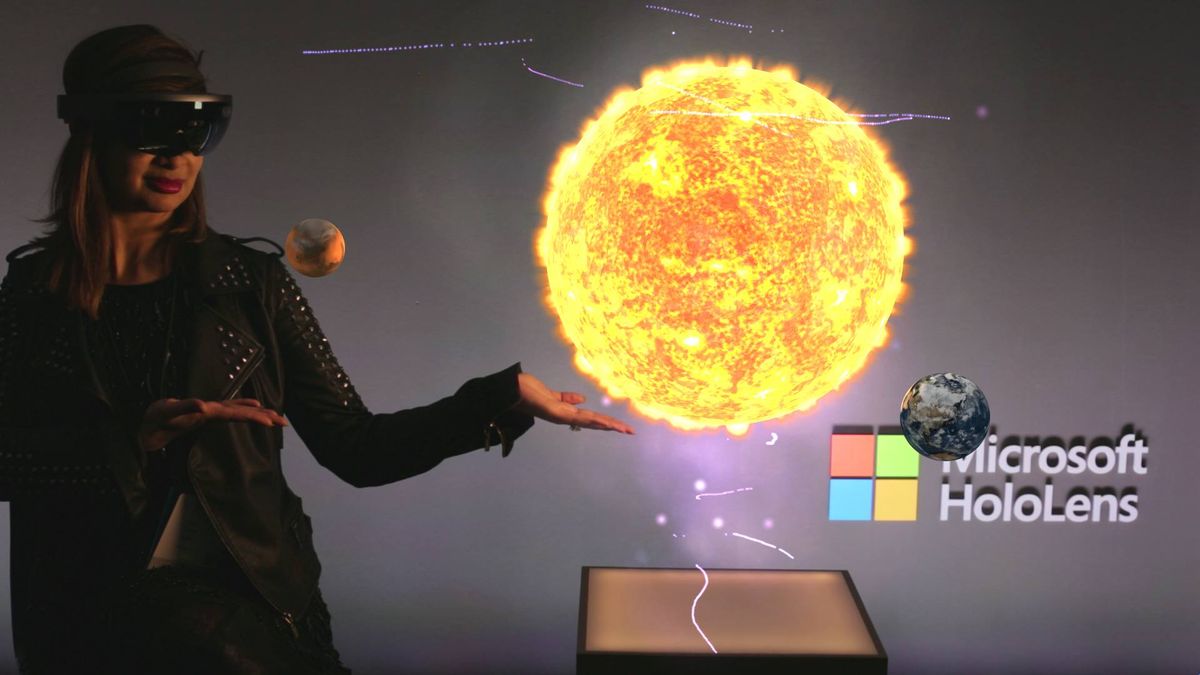Could HoloLens 2.0 use Snapdragon 845 instead of Microsoft's custom chip?
On December 5, Qualcomm introduced its Snapdragon 845 processor, the company's most powerful processor yet.

Senior Vice President and General Manager for Mobile at Qualcomm Technologies, Alex Katouzian, shared that the 845 would enable a range of advanced computing capabilities.
Powerful Hollywood-quality 360 degree image and video capture, immersive augmented and virtual-reality (VR) experiences, integrated AI that learns users, vault-like security, gigabyte LTE, and longer battery life will be enabled by this latest chip from the company whose technologies power virtually every smartphone and smart device on the planet.
So what about HoloLens 2.0?
The 411 on the Snapdragon 845
The debut of this chip (as with all of its processors) is the result of Qualcomm's years of collaboration with partners. Qualcomm begins working with partners three years before a chip debuts so that it can design the processor to partners' needs. A 2017 introduction and 2018 launch of the 845 in partner products means Qualcomm began its collaboration for the 845 with Microsoft (and others) no later than 2015, the same year HoloLens was introduced.
Microsoft's now working on HoloLens 2.0, which is expected in 2019. A revision to the HoloLens roadmap resulted in Microsoft skipping a version, enabling it to move the planned third model a year earlier.
Will the advanced AI and augmented reality (AR) capabilities of the Snapdragon 845 replace Microsoft's custom Holographic Processing Unit (HPU) in its second-generation AR headset? Or will Microsoft continue using a custom HPU to enable HoloLen 2.0's AR capabilities? Given their partnership and the synergy of Qualcomm's and Microsoft's missions, which include edge computing and cellular PCs, that's a fair question. But unless things have changed, Microsoft is advancing its custom HPU for the next generation HoloLens.
Microsoft's custom HPU

Microsoft's first-gen HoloLens impressed many when its creator and futurist Alex Kipman demonstrated it onstage in 2015. A completely untethered, wearable holographic computer was something out of science fiction. But it was real. Among the specs that power this device, Microsoft boasted about the custom HPU it had to design to make the device a reality.
Get the Windows Central Newsletter
All the latest news, reviews, and guides for Windows and Xbox diehards.
This HPU receives the inputs from a diverse array of sensors on the HoloLens. This includes four environmental sensors, an inertial measurement unit (IMU), four head-tracking cameras, an infrared camera and a custom depth sensor. It is responsible for aggregating this input along with the movements and gestures of the wearer as he interacts with the physical and digital environments.
The HPU is a 28nm custom-designed TSMC-fabricated coprocessor. It has 8MB of SRAM and, arranged in 12 clusters, are 24 Tensilica DSP cores. It also has 65 million logic gates and is capable of performing one trillion calculations per second. Before settling on the Tensilica cores, which were chosen due to their flexibility, Microsoft entertained other options. Those other chips did not meet Microsoft's targets for overall performance, however. Microsoft ultimately added 300 custom instructions to the Tensilica cores.
All of this tech talk simply means that the HPU was critical to making the HoloLens the only fully self-contained holographic wearable computer. It seems that Microsoft is committed to driving that innovation forward in HoloLens 2.0.
HoloLens 2.0 and HPU 2.0
In July of this year Marc Pollefeys, Director of Science for Microsoft's HoloLens division, said:
Today, Harry Shum, executive vice president of our Artificial Intelligence and Research Group, announced in a keynote speech at CVPR 2017, that the second version of the HPU, currently under development, will incorporate an AI coprocessor to natively and flexibly implement DNNs. The chip supports a wide variety of layer types, fully programmable by us. Harry showed an early spin of the second version of the HPU running live code implementing hand segmentation.
So as of July 2017, the HoloLens 2.0 is sporting the second version of Microsoft's custom HPU which will also contain, as has been previously reported, an AI coprocessor.
So why write this piece?
Qualcomm's 845 announcement included a range of capabilities this chip will enable. Immersive AR experiences was one of those experiences. Given that we're expecting to see the 845 in new devices in 2018, some may feel that's plenty of time for the chip to replace the custom HPU in a 2019 second-generation HoloLens. But Microsoft is committed to the custom HPU with incorporated AI chops.
Augment your reality
A vision of AR in everyday life.
Though the second-generation HoloLens won't get the 845 treatment some may have expected, perhaps we'll see HoloLens-inspired AR headsets from OEM partners using the chip in the not-too-distant future.
It would be great to see the AR extreme of Microsoft's Mixed Realty mission embraced by OEMs and pushed by Microsoft as we've seen VR marketed and embraced this year.
Do you think AR will be the future of computing Microsoft envisions? Are you looking forward to OEMs bringing AR headsets to market?
Jason L Ward is a columnist at Windows Central. He provides unique big picture analysis of the complex world of Microsoft. Jason takes the small clues and gives you an insightful big picture perspective through storytelling that you won't find *anywhere* else. Seriously, this dude thinks outside the box. Follow him on Twitter at @JLTechWord. He's doing the "write" thing!
